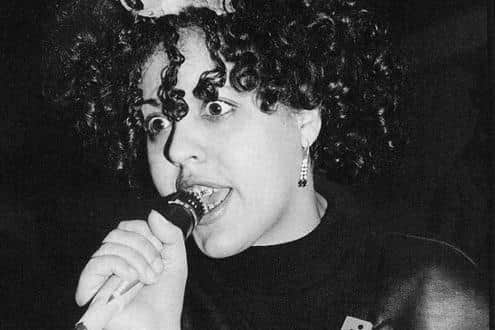Remembering the life and times of punk prodigy Poly Styrene
and live on Freeview channel 276
This article contains affiliate links. We may earn a small commission on items purchased through this article, but that does not affect our editorial judgement.
This week we look back at one of the last interviews punk rocker Poly Styrene did before her untimely death in 2011.
Hastings Observer reporter Richard Gladstone spoke to the punk pioneer about her music and coping with a life-threatening disease, which was published on Friday April 1 2011 - just a few weeks before she died in St Michaels Hospice, Hastings.
Advertisement
Hide AdAdvertisement
Hide Ad“I am living with cancer, but not dying from it” were the defiant words spoken by a feminist punk rock star.


Poly Styrene, best known for her vocal performances for X-Ray Spex in the 1970s, was diagnosed with breast cancer in November last year after months of increasing agony.
It had spread to her spine and lungs, but despite barely being able to move, the singer has been promoting her album Generation Indigo, from her bed at St Michael’s Hospice, where she is recuperating.
Poly, 53, whose real name is Marianne Elliott-Said, started on the album last spring with famous producer Michael Glover, also known as Youth from the band Killing Joke.
Advertisement
Hide AdAdvertisement
Hide AdShe began to feel a slight pain in her back which got progressively worse over the next six months.


She was left reeling after being diagnosed with cancer.
Her liver is too weak for chemotherapy and she has just been put on the drug Herceptin, and, despite being tired all the time and spending her days in bed at the hospice, the singer remains upbeat and is determined to beat the illness.
Poly, who is half-British and half-Somalian (her father was a dispossessed Somali aristocrat), said: “Since my diagnosis I have been promoting the album by doing a few interviews.
“I have hardly any mobility at the moment but am trying to get it back. It make take a year but the hospice and Conquest Hospital are helping me. I am trying to walk a bit each day but could not go out and perform on stage.
Advertisement
Hide AdAdvertisement
Hide Ad“They (doctors) say I’m getting better and I am walking a bit every day but I couldn’t go out and perform on stage. The main thing is I’m not on the death list.
“Doctors have been brilliant and the hospice has been amazing. As well as taking Herceptin, I’m also taking herbs and undergoing homeopathy, doing everything I can.
“One of the nurses at the hospital who administered my treatment had cancer and took Herceptin and it cured her. So, you never know.”
The singer was inspired to start her music career after seeing a gig by the Sex Pistols perform on Hastings Pier on her 18th birthday.
Advertisement
Hide AdAdvertisement
Hide AdShe was watching them, together with two students from Sweden and decided to place an ad inviting others to join her in forming a punk band.
Poly formed X-Ray Spex in 1976 and their debut single Oh Bondage, Up Yours became a rallying cry for the punk movement.
The band released their famous debut album Germ Free Adolescents in November 1978.
Poly wrote a solo album called Translucence in 1980.
The name of her latest album originates from the term ‘indigo children’, a label coined from New Age concepts in the 1970s that describes children who are believed to have psychic abilities like telepathy and extra sensory perception.
Advertisement
Hide AdAdvertisement
Hide AdPoly said: “Indigo children are known to be spiritually advanced. I read about them in Kindred Spirit magazine and they are meant to be quite psychic and have a desire to change the world for the better.”
The vocalist has had a rollercoaster ride most of her life.
After watching a gig in Doncaster in 1978 she had a vision of a pink light in the sky and was misdiagnosed as a schizophrenic and sectioned for several months.